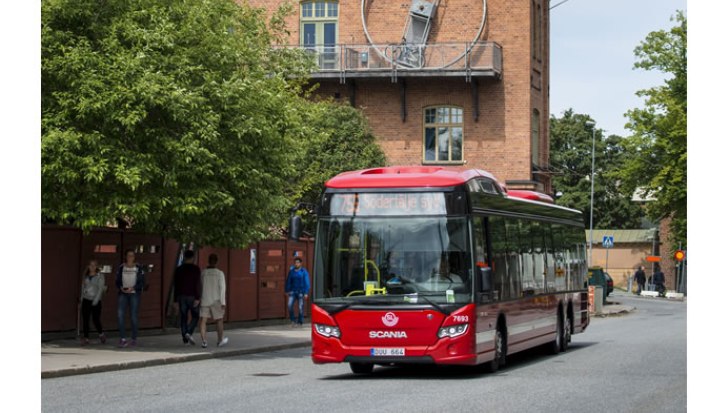In case you thought the entire electric vehicle industry is going bankrupt over the sudden price lowering of gas (felt the most in the US), we’re here to tell there still might be hope for fresh air in the future. While most of the country is happy to fill their tanks with a lot less cash, some people around the world are going forward with their plans of switching from dinosaur-juice-addicted machines to electric cars.
We all heard about all sorts of rumors claiming the new gas prices will affect the EV industry, but we say it’s still too early to talk about that. Meanwhile, however, some countries in Europe still believe that at least one part of the way their citizens commute should change from fossil-powered to electric-powered and that part is the public transport.
Taking into account that US commuters spend on average nearly a week stuck in traffic per year, maybe so should the US think.
We have previously reported on a new articulated bus running without overhead lines that is able to charge in 15 seconds. Its Swiss creators call the system TOSA and believe that the public buses could recharge at the stops along the route in about the same time it takes for passengers to disembark and embark.
But what if we were to tell there is yet another company that is looking to test a wirelessly charged electric-hybrid city bus. It’s the brainchild of the Sweden-based busmaker Scania who is claiming that this is actually possible. In fact, the bus will start operating on the streets of Sodertalje, a city 30 minutes away from Stockholm, in June 2016, as part of a research project into sustainable vehicle technology.
The citybus is designed with an electric-hybrid powertrain. One of the bus stops it will run through was specially created with a charging station where the vehicle will be able to refill wirelessly from the road surface. The bus will recharge with enough energy for a complete journey in just six to seven minutes.
Since Scania is already researching for various types of electrification technologies that could replace or complement combustion engines, the bus makers are considering induction as one of the options. Induction would involve vehicles to recharge wireless via electrified roads.
Taking into account that US commuters spend on average nearly a week stuck in traffic per year, maybe so should the US think.
We have previously reported on a new articulated bus running without overhead lines that is able to charge in 15 seconds. Its Swiss creators call the system TOSA and believe that the public buses could recharge at the stops along the route in about the same time it takes for passengers to disembark and embark.
But what if we were to tell there is yet another company that is looking to test a wirelessly charged electric-hybrid city bus. It’s the brainchild of the Sweden-based busmaker Scania who is claiming that this is actually possible. In fact, the bus will start operating on the streets of Sodertalje, a city 30 minutes away from Stockholm, in June 2016, as part of a research project into sustainable vehicle technology.
The citybus is designed with an electric-hybrid powertrain. One of the bus stops it will run through was specially created with a charging station where the vehicle will be able to refill wirelessly from the road surface. The bus will recharge with enough energy for a complete journey in just six to seven minutes.
Recharge through induction?
Since the city has a fleet of about 2,000 buses, reports are the city could save up to 50 million liters (13 million gallons) of fuel each year. Other put, the fuel costs would decrease by up to 90 percent.Since Scania is already researching for various types of electrification technologies that could replace or complement combustion engines, the bus makers are considering induction as one of the options. Induction would involve vehicles to recharge wireless via electrified roads.
